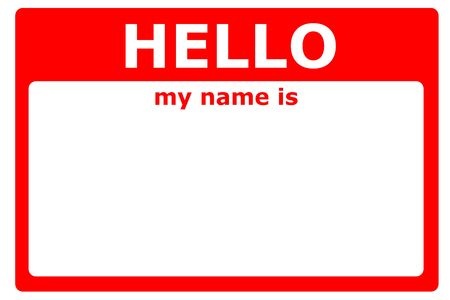“A person’s name is to him or her the sweetest and most important sound in any language.” – Dale Carnegie.
I’m not going to argue with Dale Carnegie, but I’ll add a quick point. Seeing your name in digital communication can be equally sweet. It makes us feel recognized, even when we know our name was added to the communication by a computer.
In an increasingly digital world we need to make an even greater effort to connect with people. So let me ask you a question. Do you know your biggest fan’s first name?
Silly question, right? There’s no way a busy author could know their biggest fan’s first name. Or is there?
Let’s say you have an email list where your fans can sign up to hear directly from you, through good old fashioned email. I’m not talking about Facebook, or Twitter or even Pinterest. Those are all great, but those platforms don’t belong to you. Your email list does. And besides, not all of your readers and fans use social media, but they all use email.
Now I’m going to assume you have an email list. Let’s say you send out periodic emails to that list. The readers on it signed up because they want to hear from you. They want to know what’s going on with your books, your research, or even your life.They want to see behind the curtain, and they want to feel as though they are important to you. And they are! They’re among your biggest fans, and they are the people you’re writing for.
When you collect those email addresses, it’s equally important to collect first names. Mailing list services like Mail Chimp, AWeber, Constant Contact, and the other big services make it easy to collect those first names. Using them each time you send out a mailing creates a stronger bond between you and your readers.
Mailing list services track what happens with the email you send out. Log into the service you use and look for the people who open your email the most often. You may find that there’s a single person who’s opened every email you’ve ever sent. What’s her first name?
Okay, I’ll admit, this IS a fanciful example, but I used it to make a point. Authors have the opportunity to create a stronger bond with readers through the use of technology, and a well-run email list is one of the most valuable tools in the digital toolbox.
I subscribe to about two-dozen author email lists. Do you know how many of those authors send me email on a fairly regular basis, and not just when new books come out? Probably 25%. Do you know how many of those send an email beginning with my first name? Three.
Three out of about two-dozen send a personalized email to me, someone who has identified himself as a reader, on a regular basis.
Which ones do I always open? You guessed it, the ones who communicate directly with me, by using my first name. Because I open them future emails are far more likely to show up in my inbox, rather than a promotional tab, or spam folder.
Do you want to develop a better relationship with your readers and fans? Then pay attention to your email list. Here are some quick reminders of best practices:
1. Have an easy to find link or button on your website where readers can sign up for your email list.
2. Collect the first name and email address. Most email marketing experts say you don’t need to collect a last name.
3. Learn how to use your email system’s mail merge feature so your reader sees her first name in the first line.
4. Don’t just send emails when you have a new book unless you’re Russell Blake and produce a book a month. Most authors release one or two books a year. Sending a quarterly, or even a monthly update, just to stay in touch with your readers, makes it more likely your email will be opened when you have a new release.
5. Check the stats from your email provider. Know what emails are being opened, and who is opening them. Test different ideas for messages and use what gets the highest open rates.
Your email list can be one of the most valuable business assets you have as an author. Using it well will help you sell more books.
Copyright: gunnar3000 / 123RF Stock Photo


 Before getting into the business of writing I spent twenty-five years in the technology business as a financial guy, and then as a serial entrepreneur. I know what it takes to start and run a successful business.
Before getting into the business of writing I spent twenty-five years in the technology business as a financial guy, and then as a serial entrepreneur. I know what it takes to start and run a successful business.